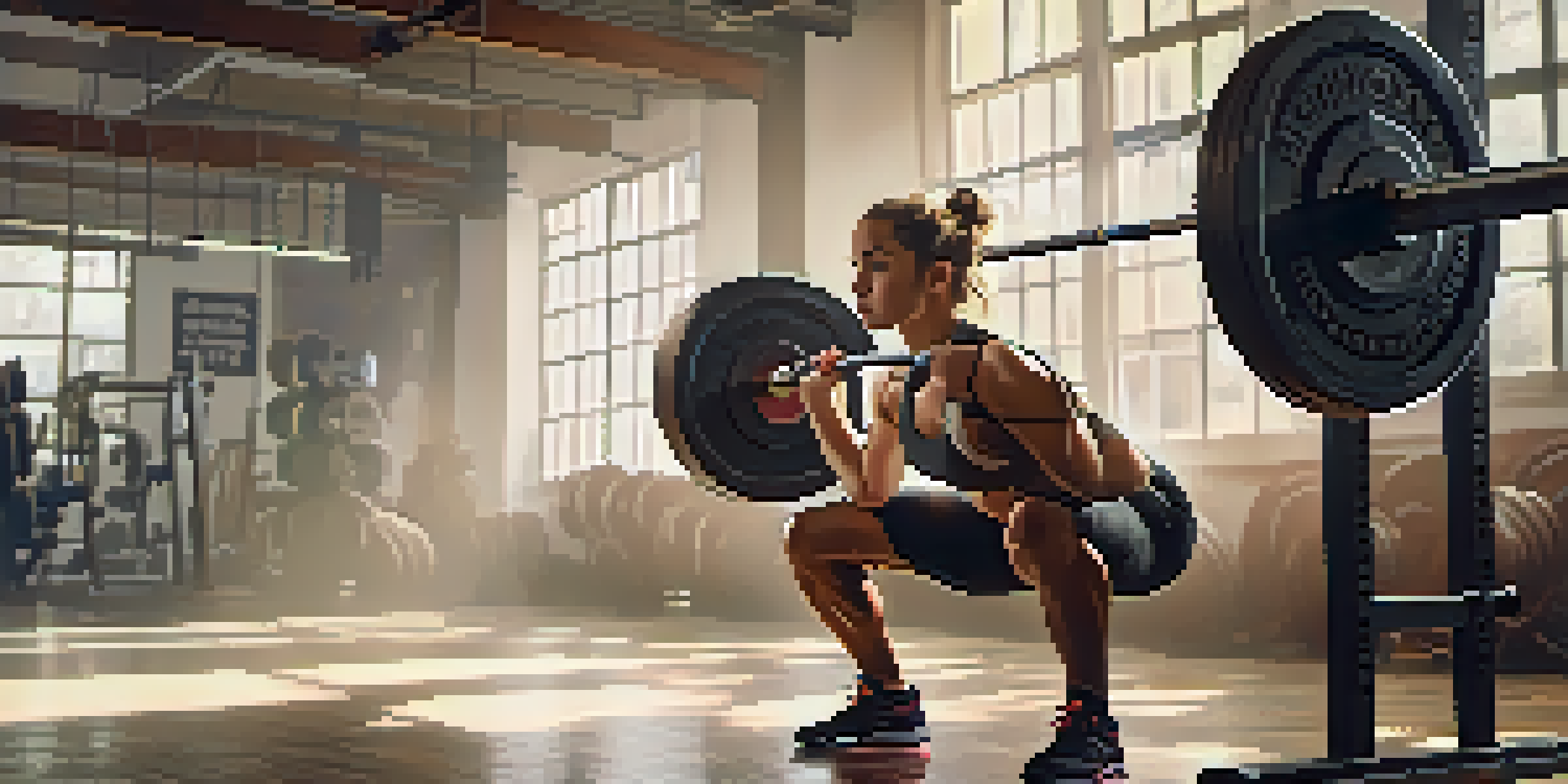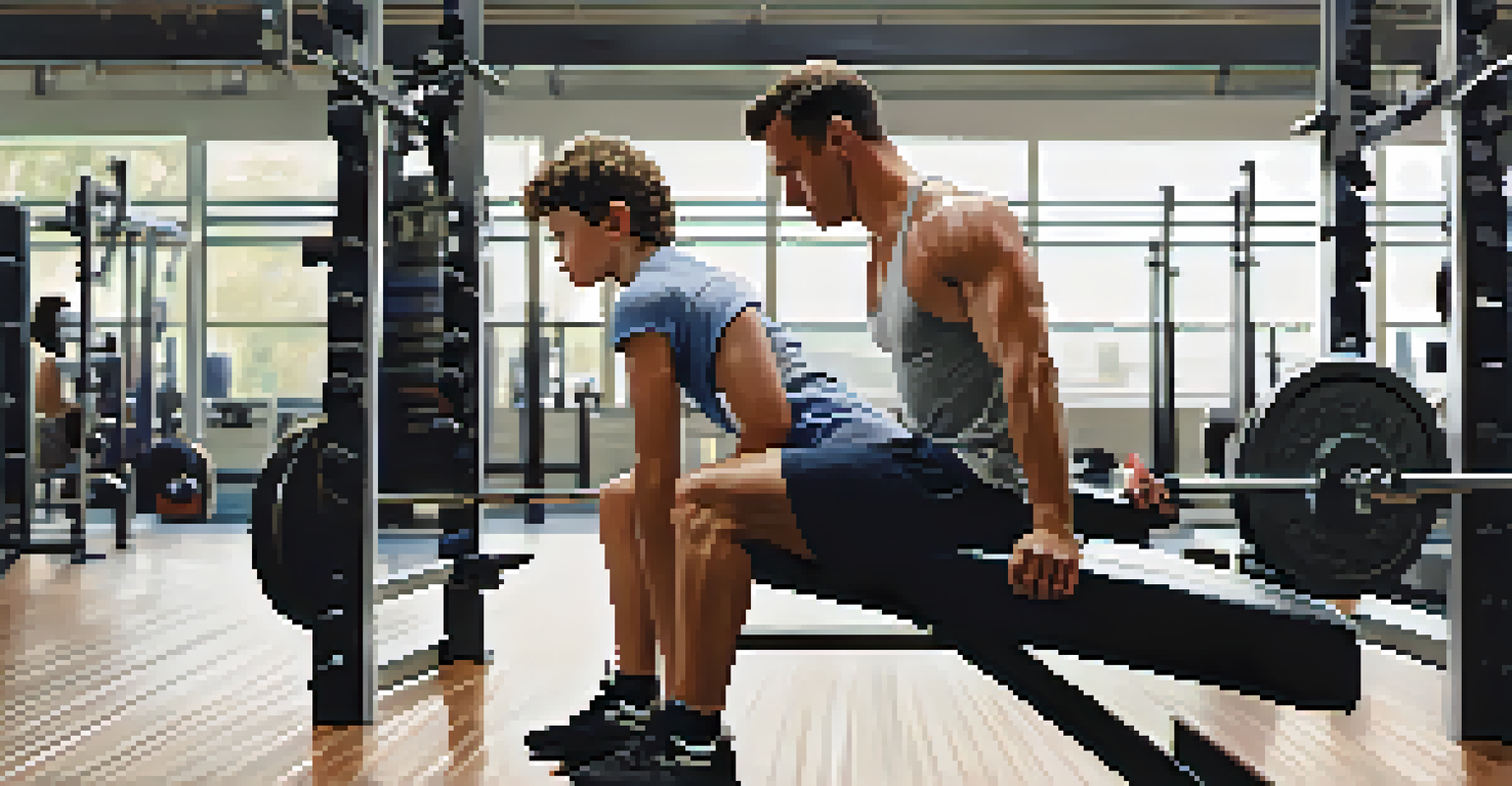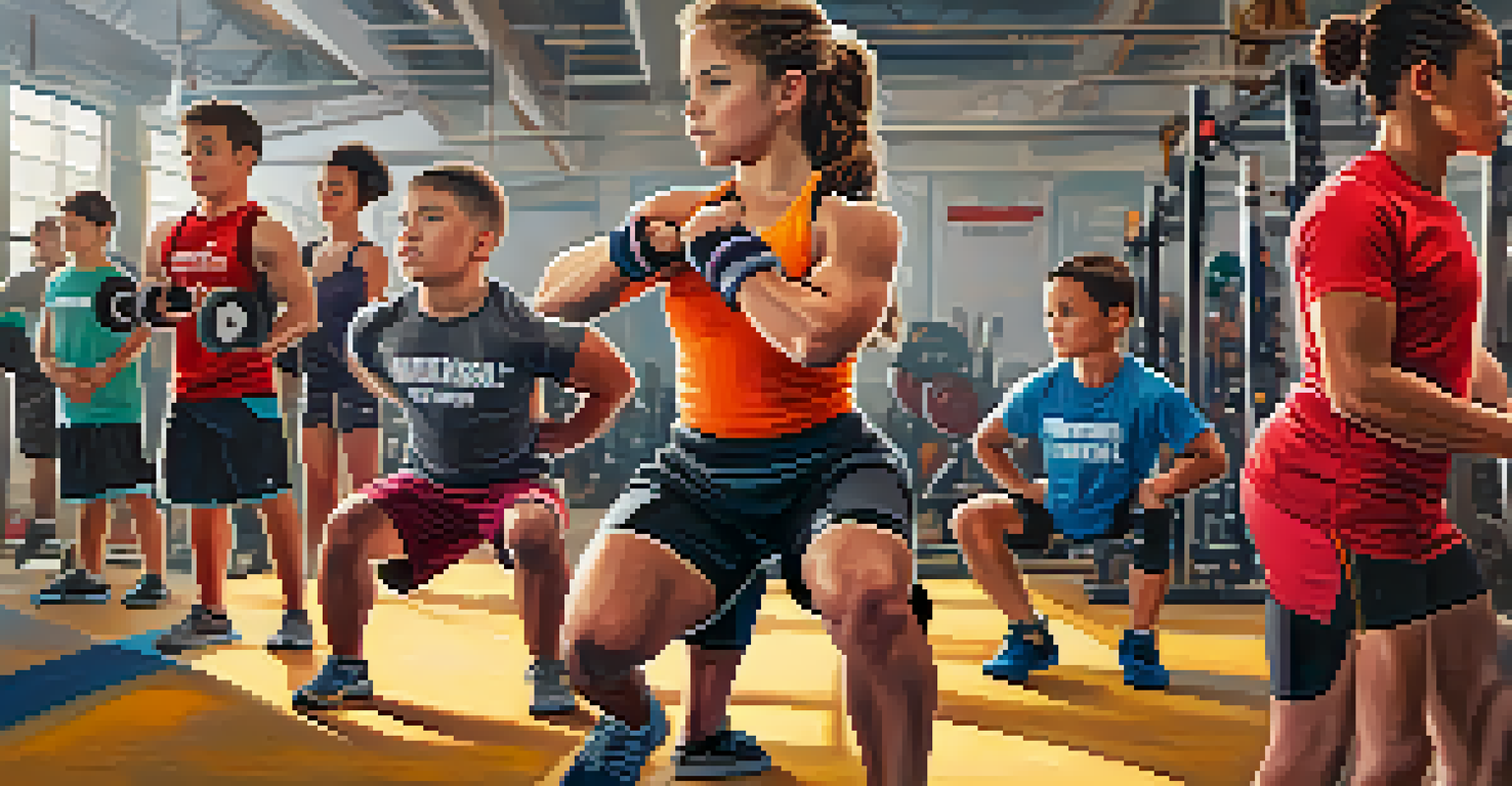Common Injuries in Youth Powerlifting and Prevention Tips

Understanding the Basics of Youth Powerlifting
Youth powerlifting is a sport that focuses on three main lifts: the squat, bench press, and deadlift. These lifts help build strength and improve overall fitness among young athletes. However, as with any physical activity, there are risks involved, especially if proper techniques aren't followed.
Strength does not come from physical capacity. It comes from an indomitable will.
Many young athletes are eager to lift heavy weights, sometimes overlooking the importance of form and technique. This eagerness can lead to injuries, making it essential for coaches and parents to educate youth about safe practices. Understanding the fundamentals of powerlifting can help minimize risks.
In this article, we’ll explore some common injuries that youth powerlifters face and provide helpful tips for prevention. By focusing on safe practices, young lifters can enjoy the benefits of the sport without unnecessary injuries.
Common Injuries in Youth Powerlifting: An Overview
One of the most frequent injuries in youth powerlifting is lower back strain. This often happens when athletes lift weights that are too heavy or when their form is compromised. A strong back is crucial for executing lifts safely, but overloading can lead to serious issues.

Another common injury is shoulder pain, particularly in the bench press. Young lifters may not have developed the necessary shoulder stability and strength yet, making them more prone to injuries. Proper warm-up and strengthening exercises can help protect these vulnerable areas.
Focus on Technique to Avoid Injuries
Mastering proper lifting techniques is crucial for preventing injuries and enhancing performance in youth powerlifting.
Knee injuries are also prevalent, especially during squats. Poor technique, such as allowing the knees to cave inward, can put excessive strain on the joints. It's vital for young lifters to focus on proper squat form to avoid these injuries.
The Importance of Proper Warm-Up Routines
Warming up is an essential aspect of any workout, especially in powerlifting. A proper warm-up increases blood flow to the muscles and prepares the body for heavier lifting. Without it, young athletes are more susceptible to injuries like strains and pulls.
The only way to prove you are a good sport is to lose.
Dynamic stretches and light cardiovascular exercises can be effective warm-up strategies. For example, doing bodyweight squats or lunges can activate the muscles used in powerlifting, ensuring they're ready for the workout ahead. This preparation can significantly reduce the risk of injury.
Encouraging young lifters to adopt a consistent warm-up routine is key. By making it a habitual part of their training, they can create a solid foundation for safe and effective lifting.
The Role of Proper Technique in Injury Prevention
Proper technique is the cornerstone of safe powerlifting practices. Coaches should emphasize the importance of mastering form before attempting heavier weights. This not only prevents injuries but also promotes better performance over time.
For instance, during the squat, keeping the back straight and ensuring the knees track over the toes are crucial elements of good technique. Teaching young lifters these mechanics can help them lift safely and effectively. Regular technique checks can be beneficial.
Warm-Up Routines are Essential
Implementing effective warm-up routines helps prepare young athletes for lifting and reduces the risk of injuries.
Moreover, it's essential for coaches and parents to model good lifting practices. By demonstrating proper form and encouraging young lifters to ask questions, they can instill a safety-first mindset that will serve them well in the long run.
Strengthening Exercises to Prevent Injuries
Incorporating strengthening exercises into training can significantly reduce injury risks. Focused workouts targeting the core, back, and shoulders help build stability and support for heavier lifts. A strong core, in particular, is vital for stabilizing the body during powerlifting.
Exercises like planks, dead bugs, and rows can enhance overall strength and support the primary lifts. These supplementary exercises prepare the muscles for the demands of powerlifting and are often overlooked in training programs. A well-rounded approach is key.
Encouraging young lifters to commit to these strengthening exercises will pay off in their performance and safety. By prioritizing strength building, they can enjoy powerlifting while minimizing the risk of injury.
Listening to the Body: Signs of Overtraining
Young athletes often push themselves to improve, but it's crucial for them to listen to their bodies. Overtraining can lead to fatigue, increased injury risk, and burnout. Recognizing the signs of overtraining is vital for maintaining a healthy training regimen.
Common signs include persistent soreness, decreased performance, and lack of motivation. If a young lifter experiences these symptoms, it may be time to take a step back and rest. Educating them about the importance of recovery can help them make informed decisions about their training.
Seek Professional Coaching Support
Working with qualified coaches provides youth lifters with personalized guidance that emphasizes safety and proper practices.
Promoting a culture that values rest and recovery is essential. Coaches and parents should encourage young lifters to take breaks when needed and not feel pressured to lift heavy every session. This balance is crucial for long-term success in powerlifting.
The Importance of Professional Guidance in Powerlifting
Working with a knowledgeable coach can make a significant difference in a youth lifter's experience. A qualified coach can provide personalized feedback on technique, help design safe training programs, and monitor progress. This guidance is invaluable for preventing injuries.
Additionally, coaches can educate young lifters on the importance of nutrition, rest, and mental wellness. A holistic approach ensures that athletes not only develop physically but also understand how to care for their bodies. This support can lead to more successful and enjoyable experiences.

Encouraging parents to seek out certified coaches can enhance their child's powerlifting journey. Professional guidance creates an environment that prioritizes safety and fosters a love for the sport, making it a positive experience for young athletes.